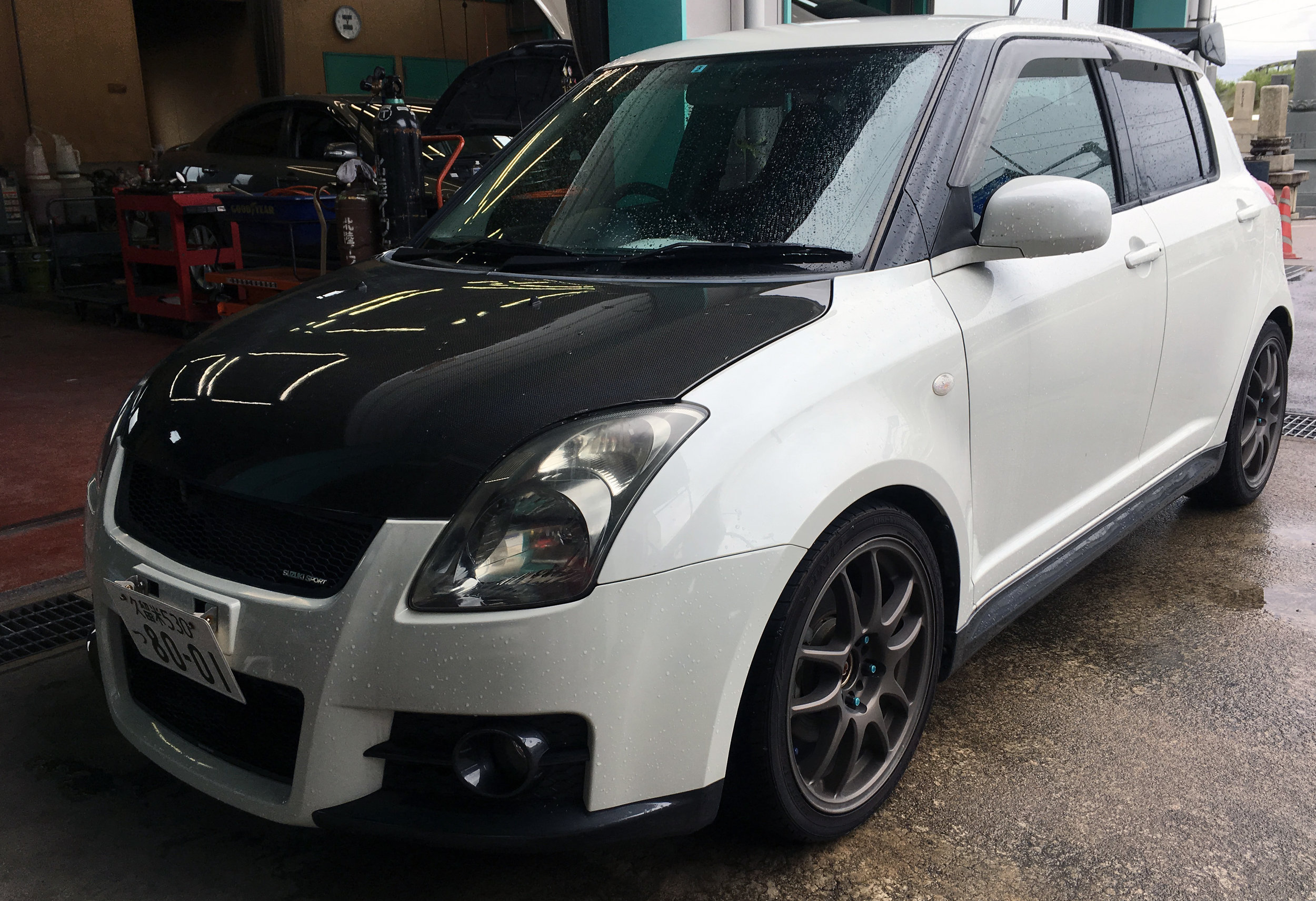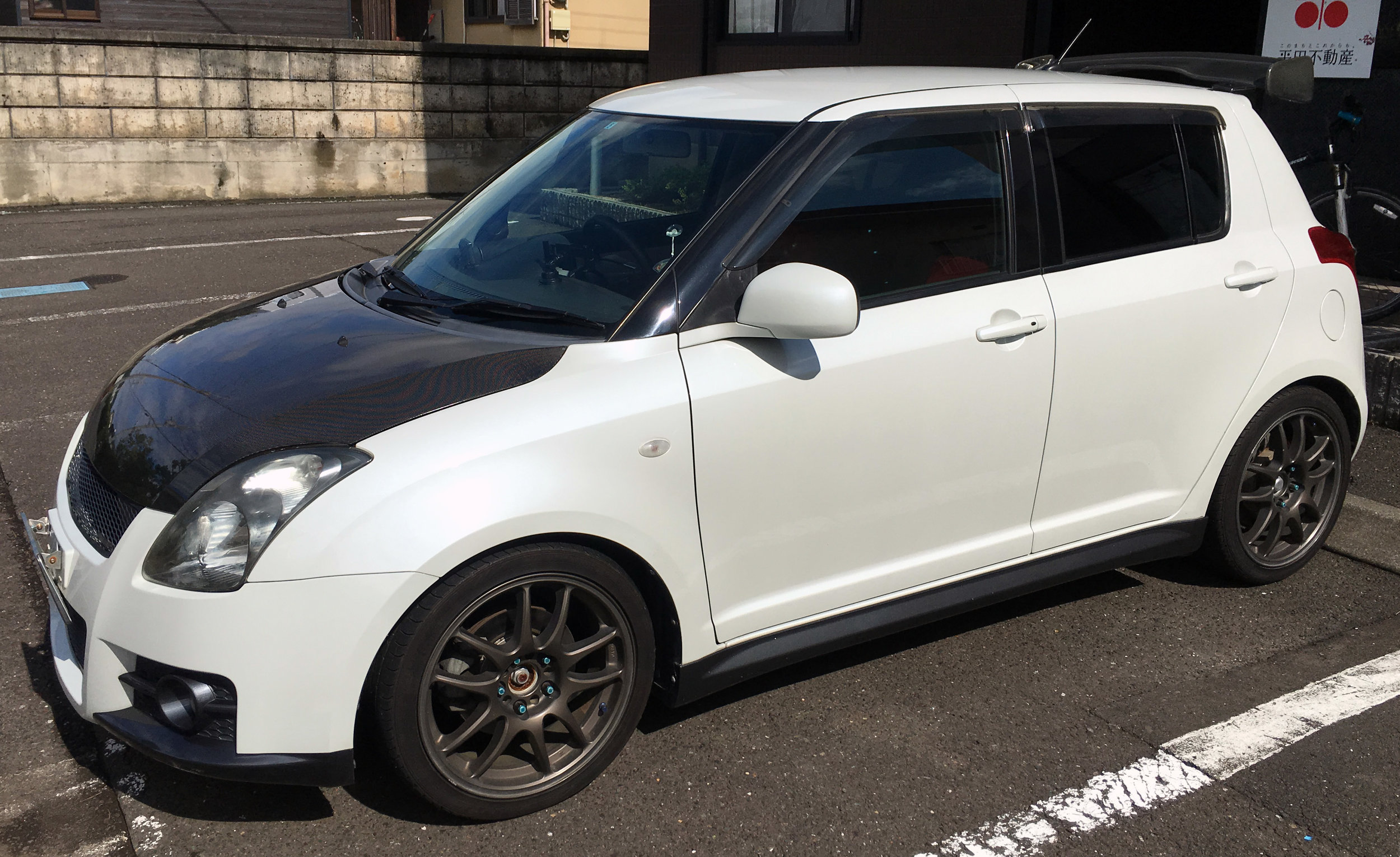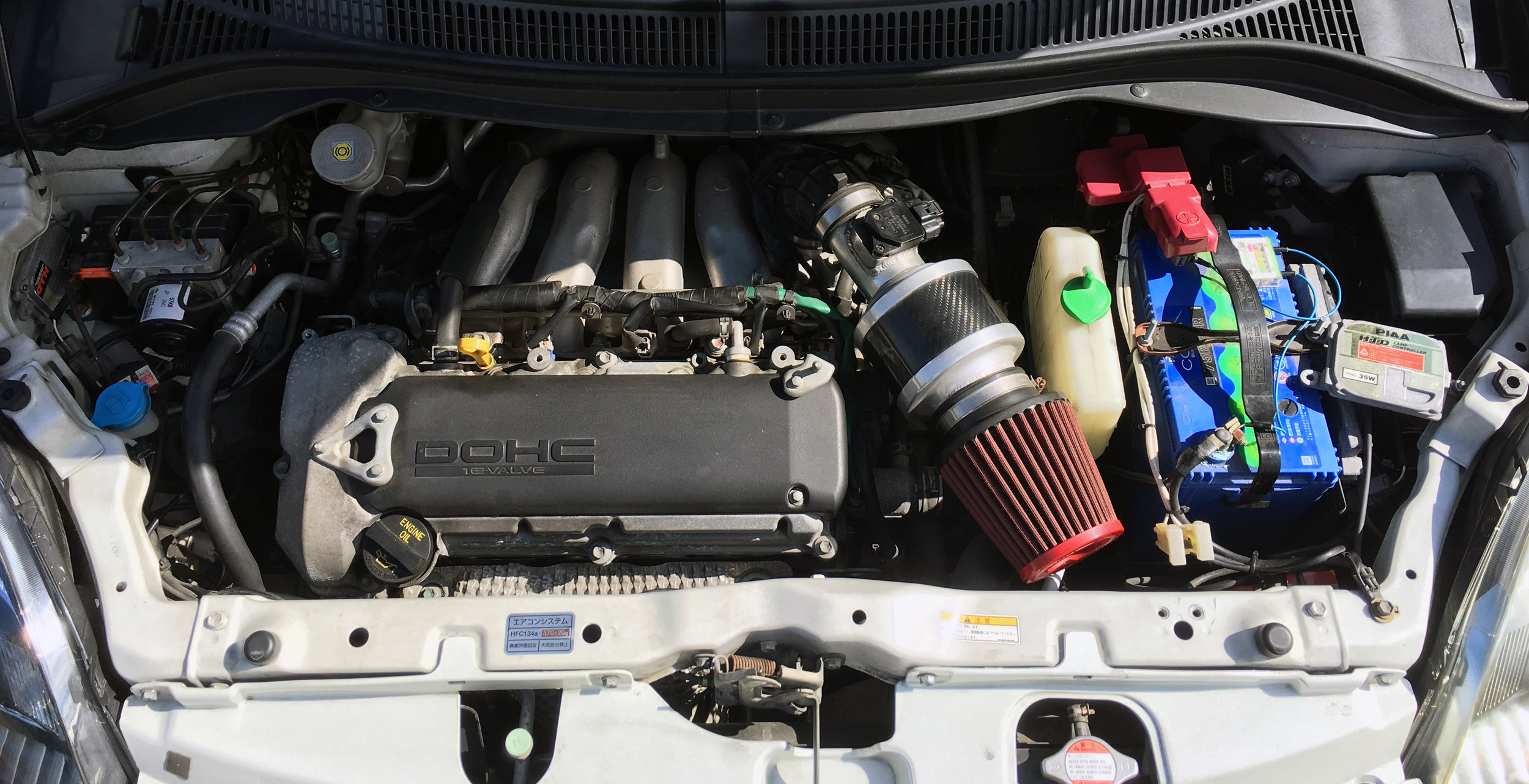[ Swift Sport ] ZC31S Review
After I sold my last Wagon R in September 2017, I picked up my Suzuki Swift Sport in October 2017, so I’ve been driving it for over a year and a half now, putting around 20,000 kilometers in that time with upwards of 12 hours in a single day, through traffic, windy roads, and inclement weather, so I can give you hopefully a pretty good impression of the car.
Exterior
The Swift looks pretty plain with the exception of somewhat flared arches, as the rest of the car has large, flat sides and very few distinguishing creases or body lines. To the layman, the base model Swift looks very similar to the Swift Sport, the most noticeable differentiating parts being the front and rear fascia. There are other details, of course, such as the side skirts, larger rear spoiler, rear lights, and dual exhaust that separate the regular from the sporty.
I will say, despite the design being 15 years old (first sold in 2004), the car has aged well, helped by it’s simplistic design that still looks like a modern econobox. With small details like a large rear spoiler and the right set of wheels, the car can still look quite sporty.
Interior
The interior of the car is a nice, if not also a bit of a plain place to be, as is typical for the price range. The car has swaths of drab dark plastic everywhere, but the finish is nicely matte and contoured, which does help make the car feel marginally more “premium” than a few other similar-year cars. The Sports’ stock seats, red fabric and stitching, and brushed faux metal panels add a racy flair, which are different than the regular Swift models. The steering wheel is thick-rimmed and simple, offering no features and no switches or controls.
The car is overall quite practical, offering some typical cubbies along the doors, 3 cup holders, and a fairly roomy interior for all passengers, even with the front seats moved to a typical seating position. The fifth middle rear seat, of course, is not really a nice place to be, but it is expected from the size.
The rear trunk area is surprisingly small. In fact, it is smaller than my Wagon R trunk in nearly all dimensions of depth, height, and length. It also doesn’t have that cheaper cars’ fold flat or reclining seats, limiting some practicality. The cushions and materials are much thicker and better, of course. But this is still surprising, given that it is the volume-selling white plate car of the Suzuki fleet. A major competitor, the Honda Fit, released in 2001, has always offered superior “Magic Seats” since its debut. Suzuki has yet to implement similar seats that even their lower-end Wagon R has (even on their current ZC33S models).
Nonetheless, neither the interior nor the exterior is what I bought the car for. How does it drive?
Engine / Drivetrain
I can’t talk about the driving experience without first talking about the powerplant and heart of the car: a M16A 1.6L, naturally-aspirated, 4-cylinder that pushes about 123 HP via a 5-speed manual gearbox. It sadly sounds like an otherwise typical 4-cylinder engine at its 6800 RPM redline and the VVT doesn’t sound particularly sweet. The ZC31S and the following ZC32S were both offered with nearly the same NA-only engine and, as with most hatchback economy cars, in front-wheel-drive only.
For cars with sporting intentions, the performance package might not sound particularly compelling, but when it comes to actual driving experience, the car can definitely hustle its 2300 pound weight around.
Driving
The shifter slots in each gear very predictably and with some solid clunk for reassurance. The shifting throw is, what I would estimate, about medium-length. It is definitely not a Miata or S2000, but it is not a Fiat 500 or Ford Fiesta. (Those stock shifter throws feel like I’m traversing the length of the center console.) It feels reasonably sporty, but its heritage is definitely econobox.
As a daily driver, my biggest issue is that the turning radius of the car is absolutely atrocious, given the length of the wheelbase. The car should be much more nimble, but the steering knuckles of the Swift Sports are different than the base Swift. The ride quality is reasonably stiff, but not excessively noisy or rough, though this may be more attributed to the Suzuki Sport aftermarket suspension than the Swift Sport OEM. (Confused? Suzuki Sport is the tuning arm of Suzuki, as Mugen or HPD is to Honda.)
As a weekend canyon carver, the Swift Sport responds with ease, inspiring confidence in the corners. Turn-in is solid and definitely conveys the weight and forces the car experiences. This makes every corner a joy to drive, though when pushed at 8/10s, it predictably understeers, plowing forward when I want it to turn. It is nowhere near as nimble as my Alto Works HA12 was, as you can definitely feel the heavier weight of the car in sharp corners. On wide, high-speed turns (which doesn’t occur frequently in these mountainous roads), rotation can be helped with a bit of left-foot trail-braking.
Conclusion
Of all the cheap econobox cars I’ve had the pleasure of driving, I can see why many reviewers have only positive things to say about the Swift Sports’ handling and overall value. I do wish there was a bit more power behind the acceleration, but given the low speed limits of Japan, the power feels more than adequate. To be honest, the car is “too large” for roads such as these to be driven hard anywhere near the limits.
This car has put a smile to my face ever since I bought it. Look forward to some more epic drives (hopefully) in the near future.






